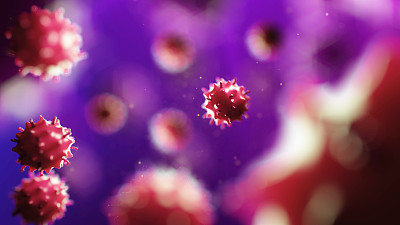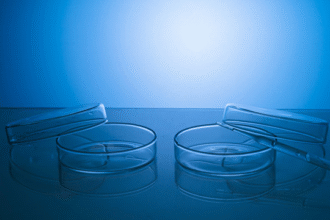Chemical Carcinogens: A Clinical and Mechanistic Overview
Introduction
The link between chemical exposure and cancer, first observed centuries ago in cases of occupational skin and lung cancers, is now a cornerstone of oncology and public health. It is estimated that environmental factors, predominantly chemical agents, contribute to a significant majority of human cancers. These substances, found in our environment, diet, and workplaces, can initiate or promote malignancy through complex interactions with cellular machinery. This overview provides a clinical framework for understanding the classification, mechanisms, and major classes of chemical carcinogens.
I. Classification of Chemical Carcinogens
Chemical carcinogens can be categorized based on their mode of action and the strength of evidence supporting their carcinogenicity.
A. Classification by Mode of Action
-
Direct-Acting Carcinogens: These agents are inherently reactive and can bind to cellular macromolecules like DNA without needing metabolic alteration. Their direct reactivity often translates to potent and rapid carcinogenic effects, making them useful in laboratory settings. Examples include alkylating agents like mustard gas and certain nitrosamines.
-
Indirect-Acting Carcinogens (Procarcinogens): The largest and most common group, these chemicals are relatively inert until they are metabolically activated within the body. Enzymes, particularly the cytochrome P450 mixed-function oxidase system in the liver, convert them into highly reactive “ultimate carcinogens.” This group includes polycyclic aromatic hydrocarbons (PAHs), aromatic amines, and aflatoxins.
-
Promoters (Co-carcinogens): These substances are not carcinogenic on their own but significantly enhance the carcinogenic activity of other agents when applied subsequently. They typically work by stimulating cell proliferation, which allows for the clonal expansion of initiated (mutated) cells. Classic examples include phorbol esters (from croton oil), saccharin, and phenobarbital.
B. Classification by Evidentiary Strength
-
Confirmed Carcinogens: Substances with sufficient evidence from epidemiological studies to be recognized as causing cancer in humans. Their carcinogenic effects often show a clear dose-response relationship.
-
Suspected Carcinogens: Chemicals that demonstrate carcinogenicity in animal studies and may show evidence of cellular transformation in vitro, but lack definitive human epidemiological data.
-
Potential Carcinogens: Agents with some positive findings in animal experiments but no data to confirm or deny carcinogenicity in human populations.
II. Major Classes and Sources of Chemical Carcinogens
Thousands of chemicals are known or suspected carcinogens. They are broadly sourced from natural products, industrial synthesis, and combustion byproducts.
| Class | Examples | Common Sources |
| :— | :— | :— |
| Polycyclic Aromatic Hydrocarbons (PAHs) | Benzo[a]pyrene, Dibenz[a,h]anthracene | Tobacco smoke, coal tar, asphalt, charred/grilled foods, vehicle exhaust |
| Aromatic Amines | Benzidine, 2-Naphthylamine | Dye and rubber industries, tobacco smoke |
| N-Nitroso Compounds | Diethylnitrosamine, N-Nitrosodimethylamine | Tobacco products, cured/preserved meats, some cosmetics |
| Alkylating Agents | Vinyl chloride, Ethylene oxide, Mustard gas | Industrial feedstocks (plastics), sterilants, chemical warfare agents |
| Metals & Minerals | Arsenic, Chromium (VI), Nickel, Asbestos | Mining, industrial processes, contaminated water, building materials |
| Natural Products | Aflatoxin B1, Safrole, Cycasin | Mold-contaminated grains/nuts (Aspergillus), certain plants/spices |
| Pharmaceuticals | Certain anticancer drugs (e.g., cyclophosphamide), Diethylstilbestrol (DES) | Chemotherapy, historical hormonal treatments |
| Lifestyle Factors | Ethanol, Betel nut quid | Alcoholic beverages, cultural practices |
III. Mechanism of Chemical Carcinogenesis
The journey from exposure to malignancy is a multi-step process.
-
Metabolic Activation: Most procarcinogens undergo biotransformation, primarily via Phase I (oxidation, reduction, hydrolysis) and Phase II (conjugation) enzymes. While Phase II reactions are typically detoxifying, Phase I activation can generate electrophilic intermediates that are highly reactive.
-
Formation of DNA Adducts: The ultimate carcinogen covalently binds to DNA, forming a DNA adduct. This lesion distorts the DNA helix, leading to errors during DNA replication or transcription if not repaired.
-
Initiation: If a DNA adduct causes a permanent mutation in a critical gene (e.g., an oncogene or tumor suppressor gene) and the cell survives, that cell is considered “initiated.” This step is rapid and irreversible.
-
Promotion: Initiated cells undergo clonal expansion, driven by promoters or chronic inflammation. This phase is reversible and requires prolonged exposure.
-
Progression: With further genetic and epigenetic changes, the expanded clone of cells acquires the hallmarks of cancer, such as invasive and metastatic potential.
IV. Risk, Potency, and Clinical Relevance
The carcinogenic potential of chemicals varies enormously. For instance, aflatoxin B1 is a potent liver carcinogen at microgram doses, whereas saccharin is a very weak bladder carcinogen requiring high, sustained doses to show an effect in rodents. This disparity is critical for risk assessment. Banning a weak carcinogen like saccharin could lead to greater public health harm if it results in increased sugar consumption and a subsequent rise in obesity and diabetes-related mortality.
Clinicians must consider the route of exposure (inhalation, ingestion, dermal), dose, duration, and individual metabolic differences when assessing a patient’s risk from chemical carcinogens.
Conclusion
Chemical carcinogens are a diverse group of agents that contribute significantly to the global cancer burden. Understanding their classification, sources, and mechanisms is essential for clinicians to effectively assess patient risk, provide counseling on avoidance (e.g., smoking cessation, dietary changes), and advocate for public health policies that limit exposure in the environment and workplace.







